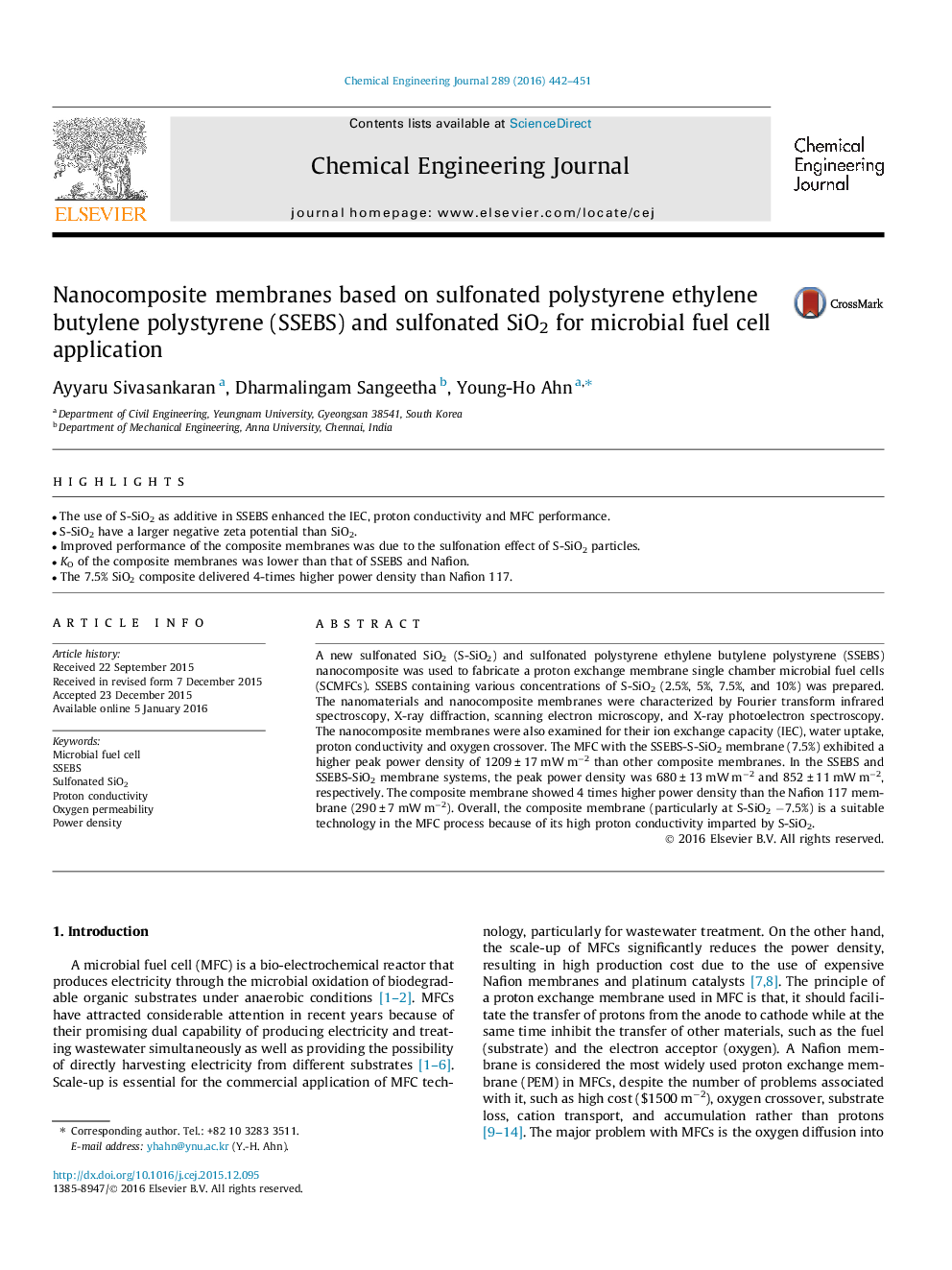| Article ID | Journal | Published Year | Pages | File Type |
|---|---|---|---|---|
| 145833 | Chemical Engineering Journal | 2016 | 10 Pages |
•The use of S-SiO2 as additive in SSEBS enhanced the IEC, proton conductivity and MFC performance.•S-SiO2 have a larger negative zeta potential than SiO2.•Improved performance of the composite membranes was due to the sulfonation effect of S-SiO2 particles.•KO of the composite membranes was lower than that of SSEBS and Nafion.•The 7.5% SiO2 composite delivered 4-times higher power density than Nafion 117.
A new sulfonated SiO2 (S-SiO2) and sulfonated polystyrene ethylene butylene polystyrene (SSEBS) nanocomposite was used to fabricate a proton exchange membrane single chamber microbial fuel cells (SCMFCs). SSEBS containing various concentrations of S-SiO2 (2.5%, 5%, 7.5%, and 10%) was prepared. The nanomaterials and nanocomposite membranes were characterized by Fourier transform infrared spectroscopy, X-ray diffraction, scanning electron microscopy, and X-ray photoelectron spectroscopy. The nanocomposite membranes were also examined for their ion exchange capacity (IEC), water uptake, proton conductivity and oxygen crossover. The MFC with the SSEBS-S-SiO2 membrane (7.5%) exhibited a higher peak power density of 1209 ± 17 mW m−2 than other composite membranes. In the SSEBS and SSEBS-SiO2 membrane systems, the peak power density was 680 ± 13 mW m−2 and 852 ± 11 mW m−2, respectively. The composite membrane showed 4 times higher power density than the Nafion 117 membrane (290 ± 7 mW m−2). Overall, the composite membrane (particularly at S-SiO2 −7.5%) is a suitable technology in the MFC process because of its high proton conductivity imparted by S-SiO2.
